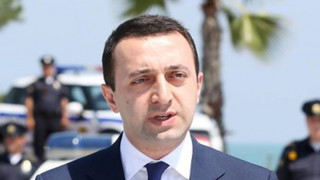On 20 September 2014, the Prime Minister of Georgia, Irakli Gharibashvili, attended the official opening ceremony of the South Corridor of the Sangachli Terminal in Azerbaijan. After the ceremony, Mr Gharibashvili stated: “The project of the 21st century with the name of Shah Deniz Stage Two is starting. This is a USD 45 billion project of which USD 2 billion will be invested in Georgia.”
FactCheck took interest in the Prime Minister’s statement and verified its accuracy.
The Shah Deniz (King of the Sea) gas field was discovered in 1999. With one trillion cubic meters of gas it is one of the biggest natural gas condensate deposits in the world. Shah Deniz is located on the Caspian Sea shelf from 50 to 500 meters underwater, 70 km southeast of Baku.
The first stage of the Shah Deniz project started in 2006. Its maximum discharge is nine billion cubic meters of gas per annum. The second stage of Shah Deniz (Full Field Development [FFD]) means the transit of an additional 16 billion cubic meters of gas per year. By the calculations of British Petroleum (BP), which is in charge of this project, USD 28 billion of capital investment will be necessary for the production of gas and its transportation to the Georgia-Turkey border. From these 16 billion cubic meters, the transit route known as the South Corridor with its additional pipeline system will provide Turkey with six billion cubic meters (bcma) of gas per year whilst the remaining ten billion cubic meters per year will supply the European market. As a result of Shah Deniz Stage Two, natural gas extracted from the Caspian Sea will reach the European market for the first time.
Shah Deniz Stage Two includes:
- Construction of two additional bridge-linked offshore platforms.
- Drilling 26 new natural gas producing wells.
- Construction of a 500 km-long underwater pipeline which will connect the wells and the terminal.
- Modernisation of the sea-construction vessels.
- Expansion of the Sangachli Terminal.
- The construction of the South Corridor requires the strengthening of the existing infrastructure and the development of a new pipeline system.
- The South Caucasus Pipeline will be widened by a new parallel pipeline crossing Azerbaijan and Georgia.
- The new Trans Anatolian Pipeline (TANAP) will transport gas from the Georgia-Turkey border through the territory of Turkey.
- Construction of the Trans Adriatic Pipeline (TAP) in Europe.
- Spending 20% of the total sum (approximately USD 400 million) on local products and service (with local contractors).
- About 2,000 new jobs at the peak of the construction and 125 long-term jobs.
- About 350,000 tonnes of material transported using Georgian ports and railway.
- A new 48-inch pipeline running beside the BTC/SCP corridor for 63 km from the Azerbaijan-Georgia border and then reconnecting to the existent South Caucasus Pipeline.
- A new block valve and pigging station.
- A new compressor station (CSG1) co-located with PSG1 in Gardabani.
- A second compressor station (CSG2) on the existent South Caucasus Pipeline to the west of Lake Tsalka.
- A new 16-km long access road that will connect CSG2 to the millennium road in the vicinity of the village of Nardevani.
- A pressure reduction metering station (PRMS) close to the Georgia-Turkey border.
- A 2.5-km pipeline connection from PRMS to the Turkish border to connect to the Trans Anatolian Natural Gas Pipeline (TANAP).
- Associated temporary construction camps, pipe storage areas and laydown yards.








